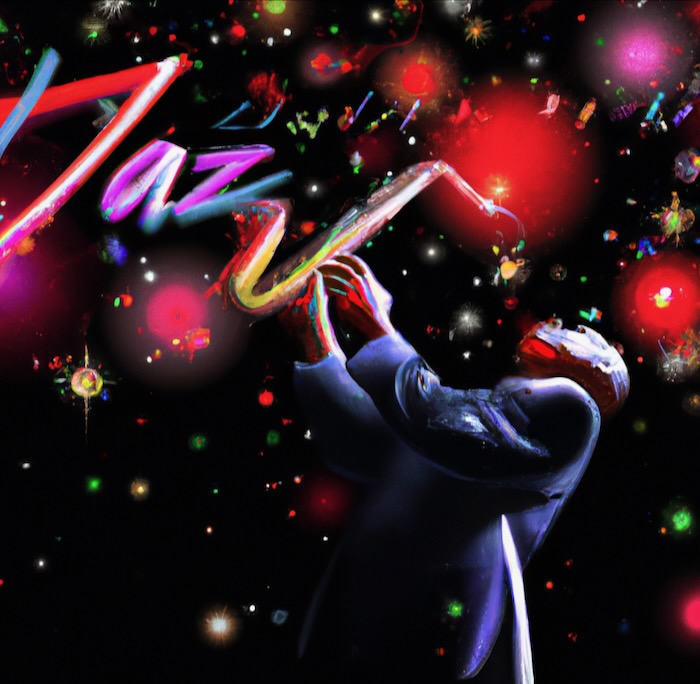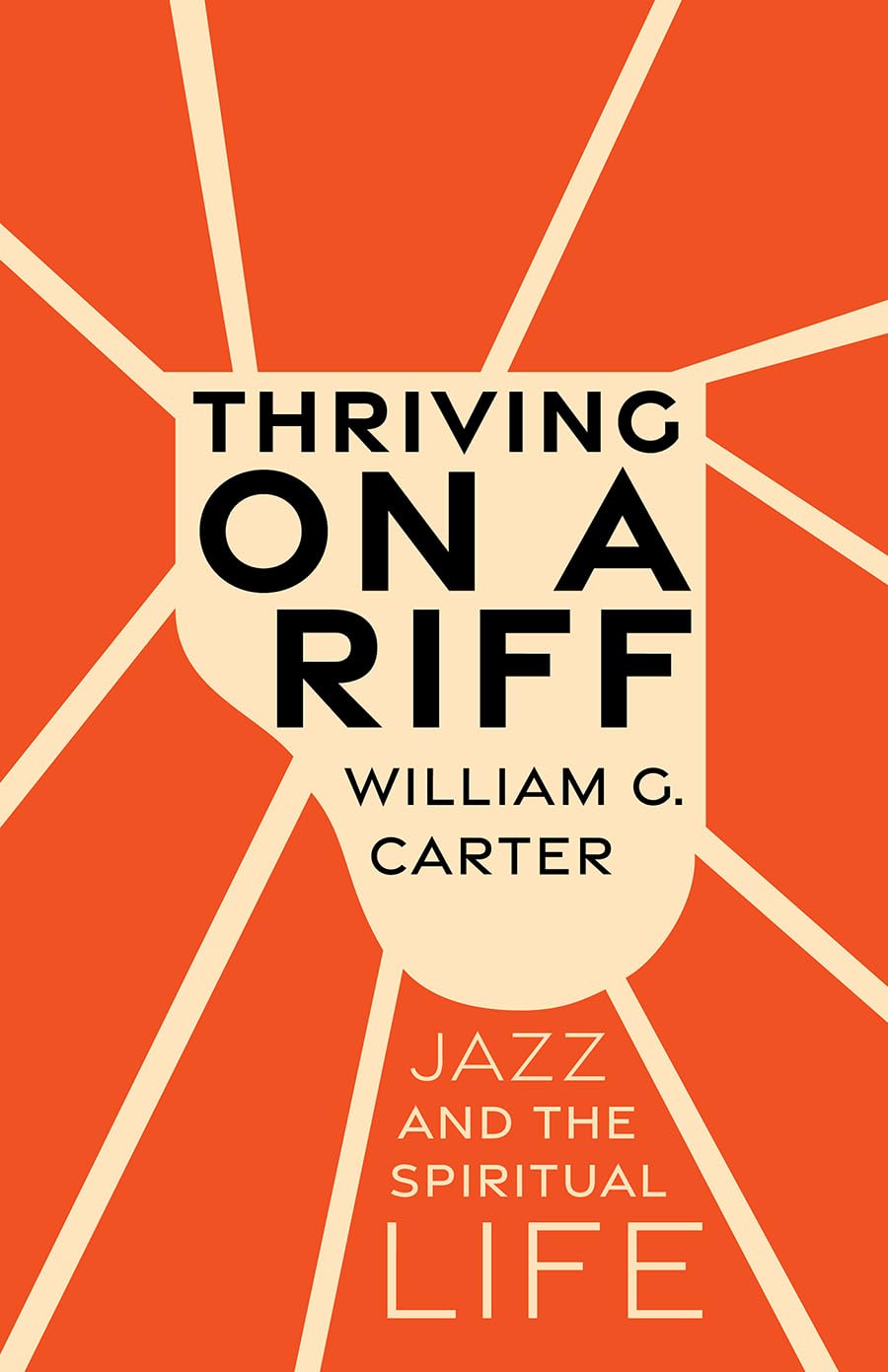‘Are you going to talk about heaven?’
The drummer asked me fervently:
Are you going to talk about heaven?
What can we say of heaven, God’s domain?
Here is what I know:
Heaven is like a jazz solo
sweeping all in its wake.
Every foot taps
every head nods
every soul leans forward,
and nobody wants it to end.
Adapted from a passage in William Carter’s Thriving on a Riff
A Conversation with William Carter—a Pastor-Theologian of Jazz
By DAVID CRUMM
Editor of ReadTheSpirit magazine
As William Carter’s face emerged on my Zoom screen, I introduced myself with a confession: “I love many jazz classics—but as a journalist I would never claim to understand jazz. I can never seem to find fresh and meaningful words to describe jazz. And that explains why I’m so enthusiastic about recommending your book to others: This is the first time I’ve read something about jazz that connects with my heart and mind and spirit in such a clear way.”
“Well, that is high praise,” Carter said as he smiled back at me across the Zoom link.
“I know I’m going to remember and quote some of your best lines in the future,” I told him. “As I read, I kept underlining passages, scribbling notes in the margins and turning down page corners.”
Then, I read aloud some of his most memorable lines:
“The skilled jazz musician can set the emotional thermostat of a room. Those who listen with available hearts can be deeply affected, even strangely warmed.” (No Methodist like me can read such a line and not think of John Wesley’s unexpected spiritual awakening one evening centuries ago when his “heart was strangely warmed.”)
And more great lines from Carter’s book:
“Emotional and intellectual, jazz connects the head and heart, suggesting a more inclusive way to plumb the depths of heaven and earth.”
“Music like that can be released as incense in a room. … These are moments of deep reality. … No one has words adequate to describe them, although novelist and spiritual writer Madeleine L’Engle describes such occasions as points of reality opening—moments of awe, clarity and truth.”
“Jazz has the power to raid the inarticulate.”
And: Jazz “opens us to the mystery of divine creativity” … “while honoring the mystery of its Source” … opening us to “a litany of abundance.”
While this book is predominantly prose, Carter’s text occasionally bursts into what he calls poetic “Improvisation.” The quote at the start of this column is from one of those free-form riffs.
I told Carter, “When we publish this cover story, we’ll definitely link to your own website—which is packed with resources I’m sure folks will want to explore. Plus, we’ll show readers your own video introduction to the book.” (Those links are at the end of this story.) I asked him, “Do you want to introduce that video?”
“I created that video to help people wade in from the shallow end of the pool,” Carter said. “I wanted to tell people a couple of accessible stories to welcome them into my world. Because my day job is as a Presbyterian pastor, I talk about scripture like this all the time—inviting people into a story and then welcoming them to step deeper and deeper with me. So, for example, you’ll hear an iconic story from my mother, in that video—the story of her going to see Louis Armstrong. That story is a good way to illustrate how one thing that happens with great jazz is: We all feel lifted up.”
Filling in the Woefully Flawed History of American Jazz
“We all feel lifted up.”
That could serve as a terrific five-word summary of Carter’s new book—capturing the appeal of the “accessible stories” he shares in this book and also the great weight he is shouldering in these pages in trying to lift up the wealth of jazz innovators who have touched on spiritual realms.
Here at ReadTheSpirit, we encourage that effort to fill in the woefully flawed history of American jazz, which has suffered from racism, sexism and even religious bias for far too many years. Earlier, we published a Cover Story about one of Carter’s friends, Deanna Witkowski. Like Carter, she is a jazz musician, educator and writer who is trying to awaken awareness of the spiritual potential of jazz. One of Witkowski’s missions is lifting up the life and creative works of the great Catholic jazz composer and performer Mary Lou Williams.
“We all have our roles in this jazz-religious nexus,” Carter said. “My friend Deanna Witkowski is a player-scholar. Compared with Deanna, I’m more of a player-pastor-theologian. I talk about how I try to pull those strands of my life together in the little video you’re going to show with this article.”
Considering the vast amount that has been written about jazz history in general—relatively little has been written about jazz adapted for religious settings.
Do you know who introduced jazz to organized worship? I ran that question by a journalist friend who has been covering religion nearly as long as I have and he guessed: “I’m thinking it was at Grace Cathedral in San Francisco in the ’60s with Vince Guaraldi, the Peanuts guy. Right?”
“Good guess! That happened in 1965,” I said. “But, the first intentional experiments with jazz in worship go back to the late ’50s.”
As it turns out, there still is no definitive consensus among music historians on the “first” in this genre—although Carter names a couple of the earliest milestones. Often, jazz pioneer Ed Summerlin is given the credit for his 1959 Requiem for Mary Jo, which was performed during a service in the chapel at the Perkins School of Theology at Southern Methodist University. But Carter calls for further historical research on these break-through artists, because he believes “that honor likely belongs to Frank Tirro,” the former dean of the Yale School of Music who may have slightly pre-dated Summerlin’s Requiem with his own American Jazz Mass, which he created while he was a student at the University of Nebraska.
The moment I read that chapter in Carter’s book, I realized how much journalistic and historical work still needs to be done. In this question of “firsts,” Ed Summerlin has a big head start with a growing Wikipedia page—while Tirro’s life and work are missing from the giant online encyclopedia. A New York Times 1987 overview, headlined “Jazz for Church Services Makes Measured Progress,” suggested that the distinction of “first” might actually belong to the Park Avenue Synagogue in New York for some early experiments with jazz in the late 1940s.
Beyond pointing us toward the beauty and transcendent power of jazz in this new book, Carter also is raising prophetic questions about how our cultural heritage continues to present barriers we need to break down.
Jazz asks: ‘How open hearted are you?’
And that brings us back to a central question that Carter asks in this book: Have we let our collective biases keep us from fully appreciating the potential joy, solace, relief and spiritual wonderment of jazz? Chief among those barriers have been racial, gender and religious biases baked into Western culture in general and Christian orthodoxy in particular.
In our Zoom conversation, Carter and I talked about America’s distinctive nature as fertile ground both for jazz as a groundbreaking genre—and for men and women with visions of religious innovation. Those prophetic iconoclasts have ranged from Anne Lee and the Shakers in colonial America to the Azusa Street Revival in Los Angeles just before World War I, which brought people together across racial, ethnic and gender barriers to touch off the global Pentecostal movement.
As I was listing some of those religious innovations, Carter said, “Yes, there are direct lines in American history between these kinds of freedoms of religious expression that you’re describing—and the freedoms of expression that were gestating in the jazz tradition. The Pentecostal movement you mentioned, yes, broke down some barriers, but then like Reconstruction in America after the Civil War, there were backlashes as well over the years as well. This struggle over race and freedom of expression is a constant in our American history and in the history of jazz.
“Jazz in America has always involved crossing lines,” Carter continued, “from the first white folks who snuck into black clubs to hear this music—to early cross-racial relationships that developed among people who came together around jazz.”
“That’s an important part of your book,” I said.
“Because it’s at the heart of jazz,” Carter said. “One of the markers of a great jazz player is the question: How open-hearted are you? Can you listen to rhythms from other cultures and take them into your own music? We know that jazz is always pushing us beyond our racial, ethnic and national boundaries. From my perspective as a pastor, I see this all as part of the prophetic movement of the Spirit breaking through and speaking to our human condition—pushing us out of our safety zones.
“Historically, jazz and jazz musicians have struggled in America because of all these complex enmeshments of racism,” Carter said. “I think that we are seeing a growing acceptance of jazz, mirroring what I hope is the larger development and the broadening of our culture. But we’re far from done. From the perspective of faith, we need to realize that it’s reckoning time in America and we have to address what the majority has suppressed for so many years.”
That message flows through Carter’s book. When I asked him to describe the way he hopes his book will affect readers, he said:
“Ultimately, I hope that people will be awakened, grounded and enlarged in their devotion and their work for justice—and in their potential for wonder. I have a conviction that jazz-making is spiritual and holy work. I hope that through jazz, we can find new clues about how to make our way through life—perhaps loving people we normally are not supposed to love—and daring to create something new together.”
.
.
Care to learn more?
Watch Carter’s video introduction to his book
Get a copy of Carter’s book
Thriving on a Riff is available in hardcover and Kindle through Amazon.
Explore Carter’s website
He calls his website PresbyPop.com
In particular, don’t miss the Watch and Listen section of his website, where you’ll find a dozen fascinating videos of Bill in performance—along with an accompanying list of future events. There are lots of gems to discover on his website, including a DVD he produced called Jazz Belongs in Church.



Mare lichidare de stoc la Sereni Capelli pentru Tratament Impotriva Parului Alb / Carunt / grizonant!
Produsele functioneaza atat pentru Femei, cat si pentru Barbati, indiferent de varsta.
Nu pierde reducerile de azi pe serenicapelli.ro
Stocurile cu reduceri sunt limitate.
Big Clearance Sale at Sereni Capelli for Anti-Gray Hair Treatments!
The products work for both Women and Men, regardless of age.
Don’t miss today’s discounts on serenicapelli.com
Discounted stocks are limited.